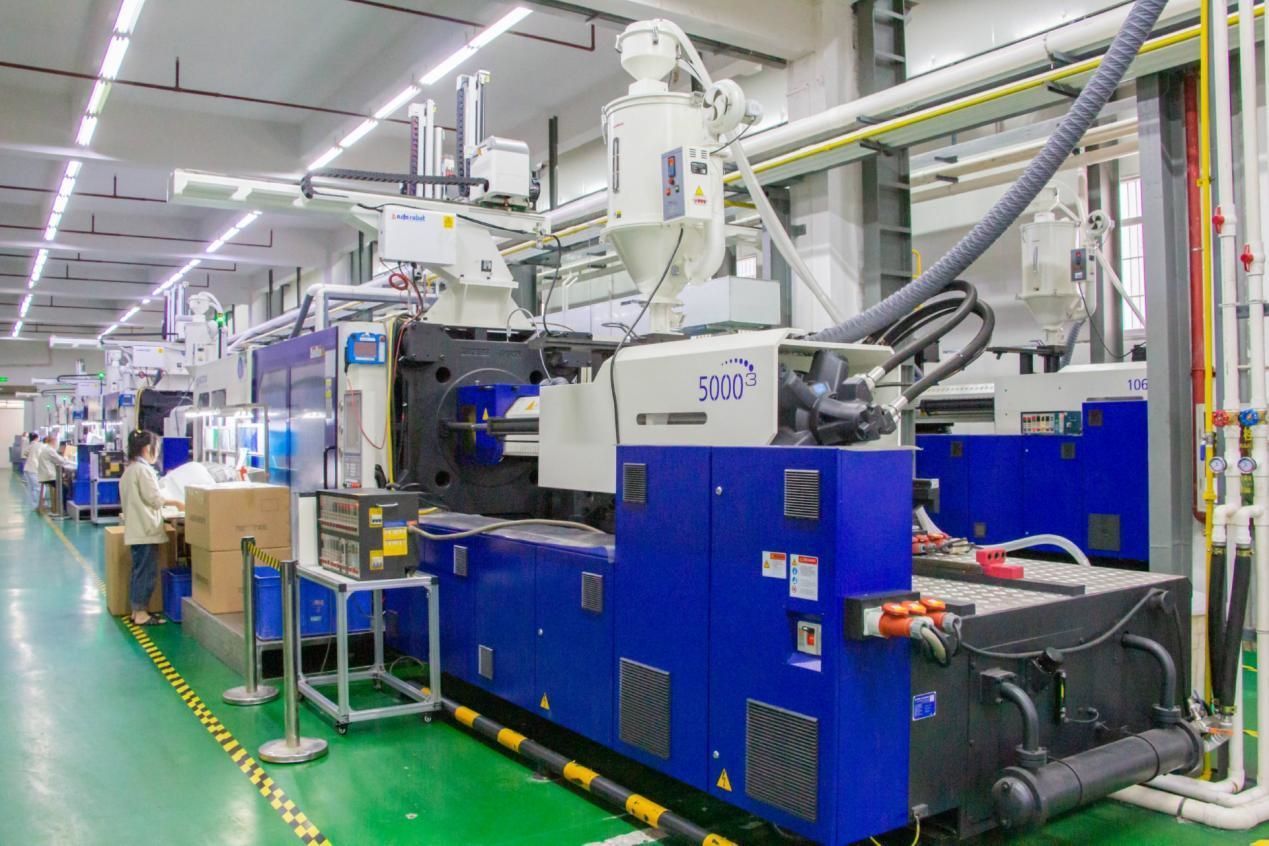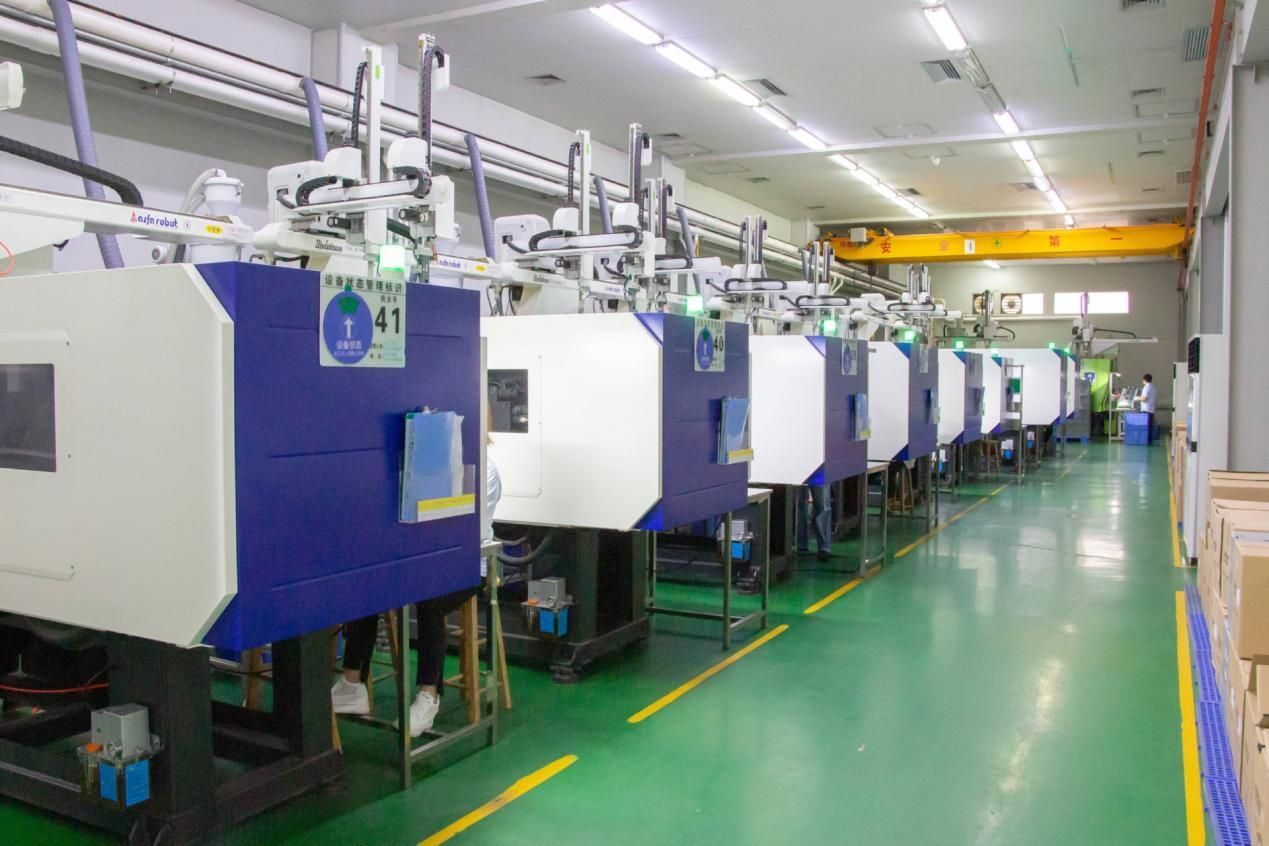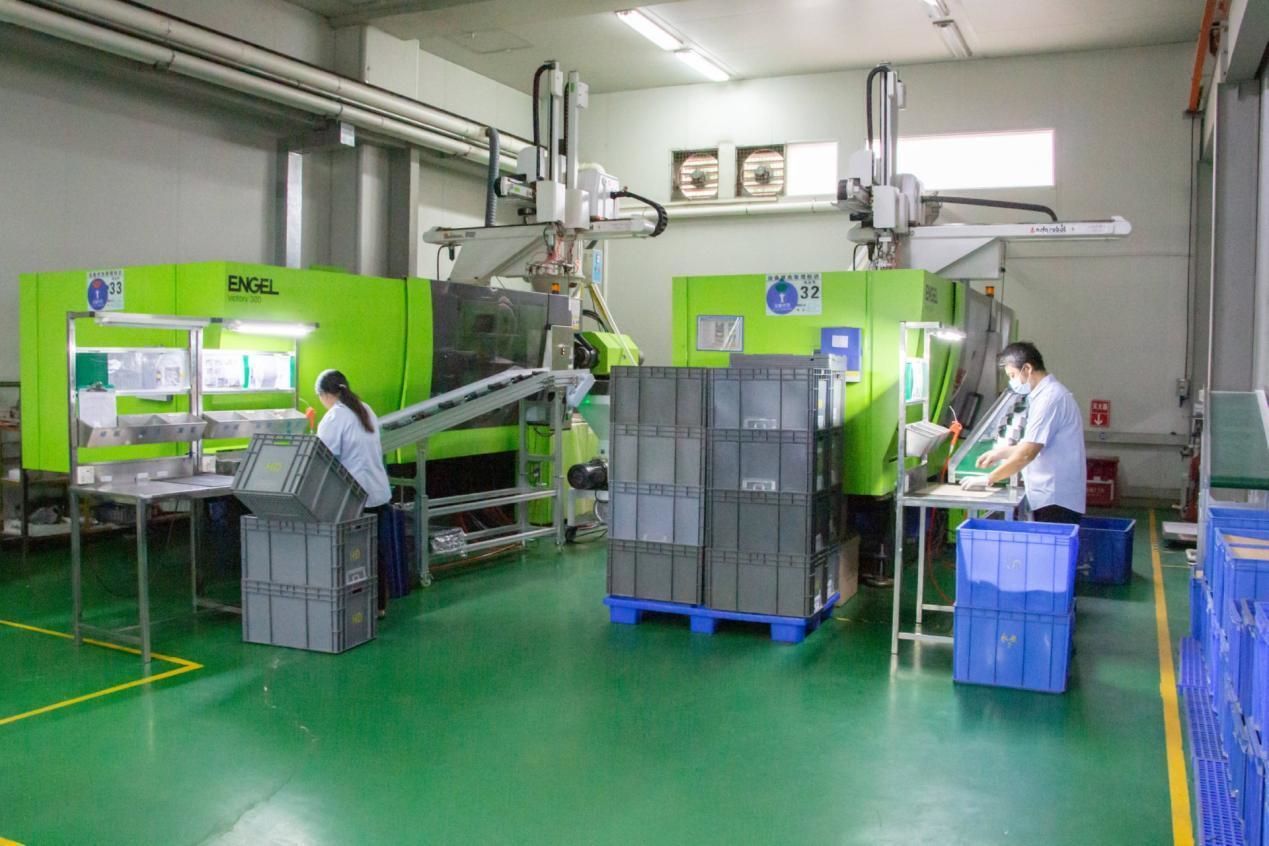Plastic injection molding machines are machines that heat and mix plastic pellets until they’re melted into a liquid, which is then sent through a screw and forced through an outlet into molds to solidify as plastic parts.
There are four basic types of molding machinery, classed around the power used to inject the plastic: hydraulic, electric, hybrid hydraulic-electric, and mechanical injection molders. Hydraulic machines, which use electric motors to power hydraulic pumps, were the first type of plastic injection molding machines. The majority of injection molding machines are still this type. However, electric, hybrid, and mechanical machinery has greater precision. Electric injection molders, using electricity-powered servo motors, consume less energy, as well as being quieter and faster. However, they’re also more expensive than hydraulic machines. Hybrid machinery uses the same amount of energy as electric models, relying on a variable-power AC drive that combines both hydraulic and electric motor drives. Finally, mechanical machines increase tonnage on the clamp through a toggle system to ensure flashing doesn’t creep into the solidified parts. Both these and electric machines are best for clean room work as there’s no danger of hydraulic system leaks.
Each of these machine types works best for different aspects, however. Electric machines are best for accuracy, while hybrid machines offer more clamping force. Hydraulic machinery also works better than the other types for the production of large parts.
In addition to these types, machines come in a range of tonnage from 5-4,000 tons, which are utilized depending on the viscosity of the plastic and parts that will be made. The most popularly used machines, however, are 110 ton or 250 ton machines. On average, larger injection molding machinery can cost from $50,000-$200,000 or more. 3,000 ton machines can cost $700,000. On the other end of the scale, a desktop injection molding machine with 5 tons of force can cost between $30,000-50,000.
Often a machine shop will only use one brand of injection molding machine, as the parts are exclusive to each brand- it costs heavily to change from one brand to another (the exception to this is mold components, which are compatible with different brands. Each brand’s machines will perform certain tasks better than others.
Basics of Plastic Injection Molding Machines
The basics of Plastic injection molding machines consist of three major parts: the injection unit, the mold, and the clamping/ejector unit. We’ll focus on the injection mold tool components in the following sections, which break down into the sprue and runner system, the gates, two halves of the mold cavity, and optional side actions. You can learn more about the process of plastic injection molding basics through our more in-depth article Plastic Injection Molding Basics.
1. Mold Cavity
A mold cavity typically consists of two sides: an A side and B side. The core (B Side) is typically the non-cosmetic, interior side that contains the ejection pins that push the completed part out of the mold. The cavity (A Side) is the half of the mold which the molten plastic fills. Mold cavities often have vents to allow air to escape, which would otherwise overheat and cause burn marks on the plastic parts.
2. Runner System
The runner system is a channel that connects the liquified plastic material from the screw feed to the part cavity. In a cold runner mold, plastic will harden within the runner channels as well as the part cavities. When the parts are ejected, the runners are ejected as well. Runners can be sheared off through manual procedures like clipping with die cutters. Some cold runner systems automatically eject the runners and part separately using a three-plate mold, where the runner is partitioned by an additional plate between the injection point and the part gate.
Hot runner molds do not produce attached runners because feed material is kept in a melted state up to the part gate. Sometimes nicknamed “hot drops,” a hot runner system reduces waste and enhances molding control at an increased tooling expense.
3. Sprues
Sprues are the channel through which the molten plastic enters from the nozzle, and they typically intersect with a runner that leads to the gate where the plastic enters the mold cavities. The sprue is a larger diameter channel than the runner channel that allows the proper amount of material to flow through from the injection unit. Figure 2 below shows where the sprue of a part mold was where additional plastic solidified there.
A sprue directly into an edge gate of a part. The perpendicular features are called “cold slugs” and help control material shear entering the gate.
4. Gates
A gate is a small opening in the tool that allows molten plastic to enter the mold cavity. Gate locations are often visible on the molded part and are seen as a small rough patch or dimple-like feature known as a gate vestige. There are different types of gates, each one with its strengths and trade-offs.
5. Parting Line
The main parting line of an injection molded part is formed when the two mold halves close together for injection. It is a thin line of plastic that runs around the outside diameter of the component.
6. Side Actions
Side actions are inserts added to a mold that allow material to flow around them to form the undercut feature. Side actions must also allow for a successful ejection of the part, preventing a die lock, or a situation where the part or tool must be damaged to remove part. Because side actions do not follow the general tool direction, undercut features require draft angles specific to the action’s movement. Read more about common types of side actions and why they are used.
For simple A and B molds that do not have any undercut geometry, a tool can close, form, and eject a part without added mechanisms. However, many parts have design features that require a side action to produce features like openings, threads, tabs, or other features. Side actions create secondary parting lines.
Post time: Mar-20-2023







